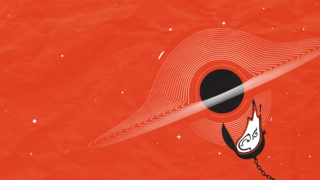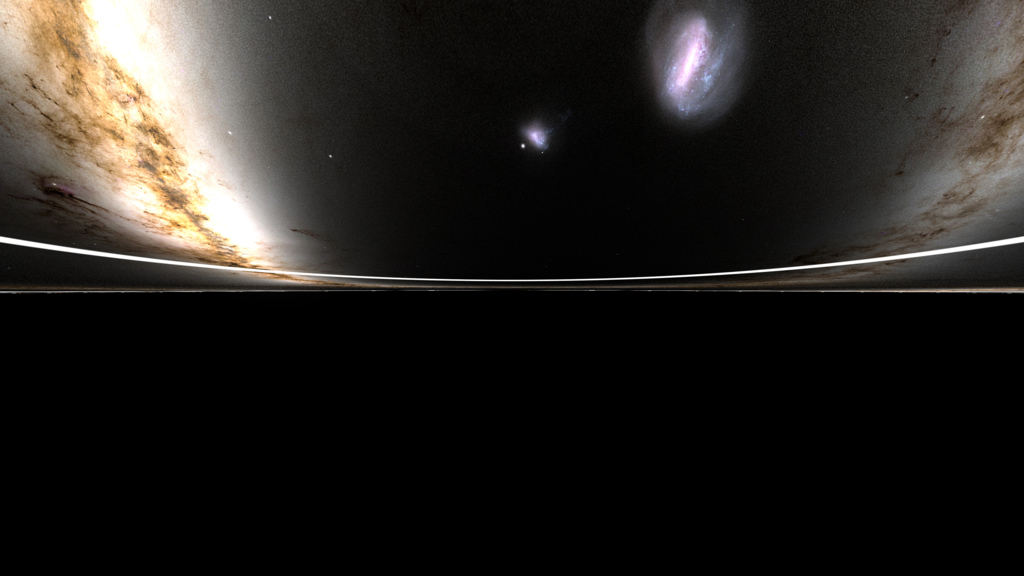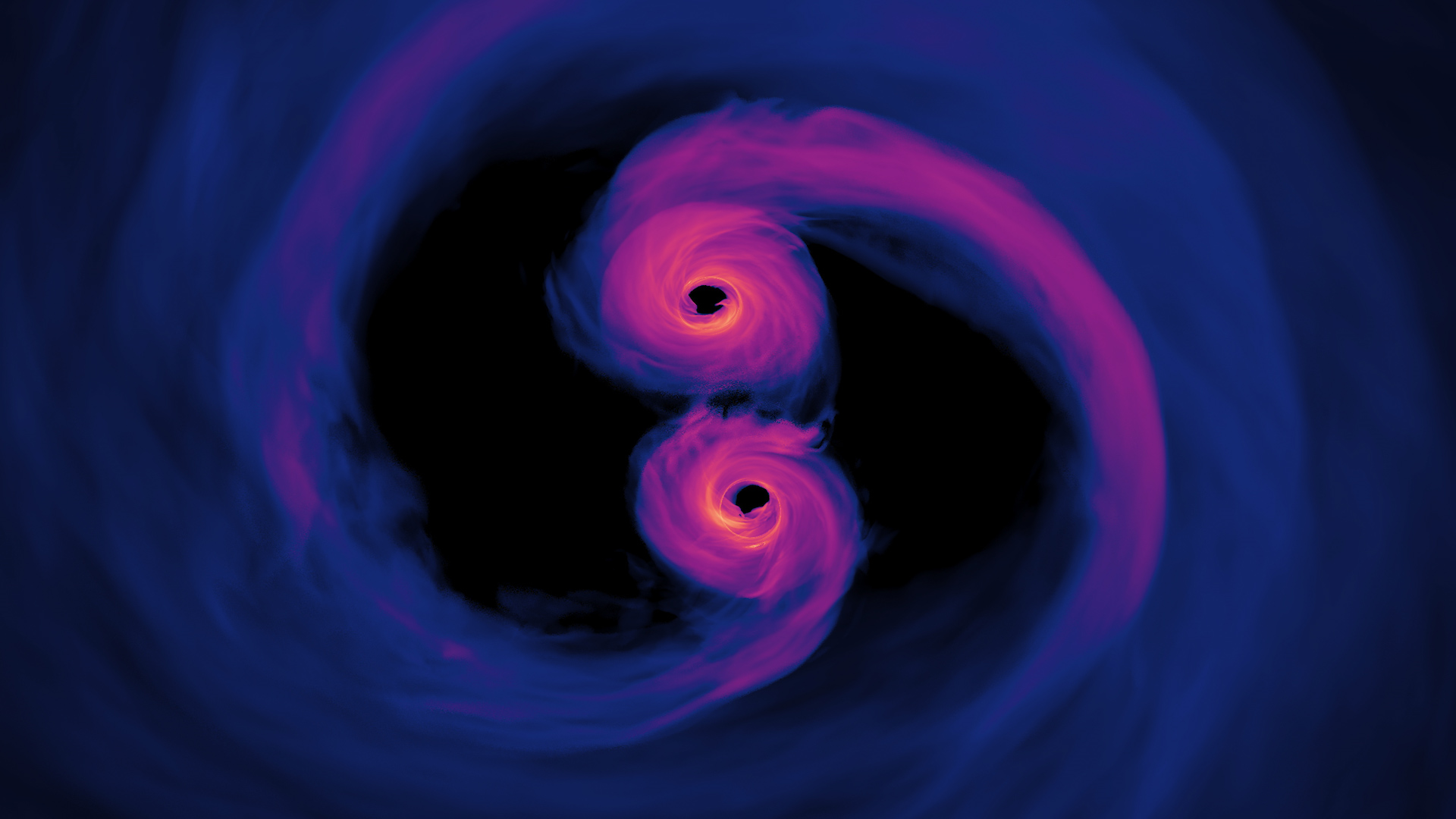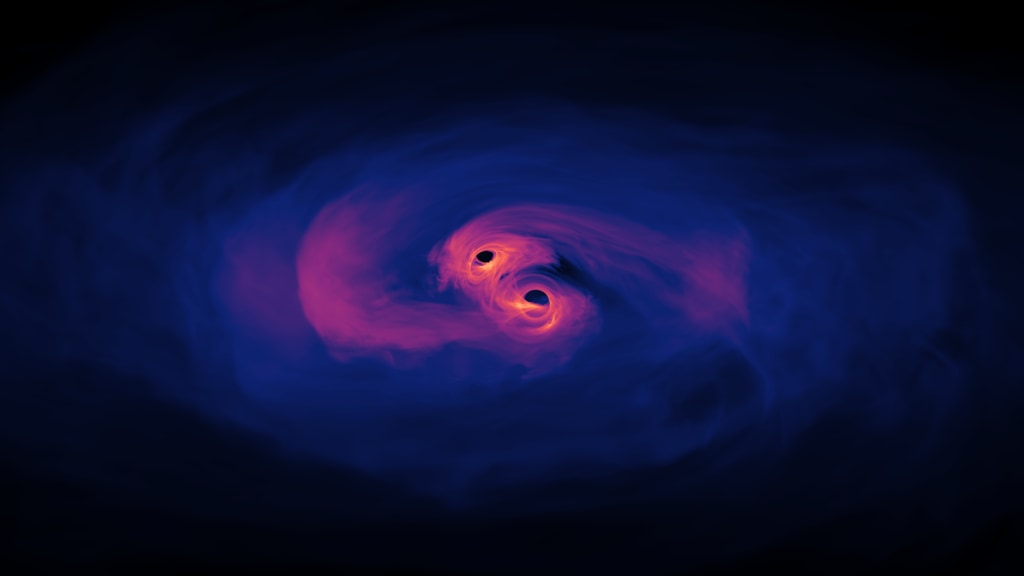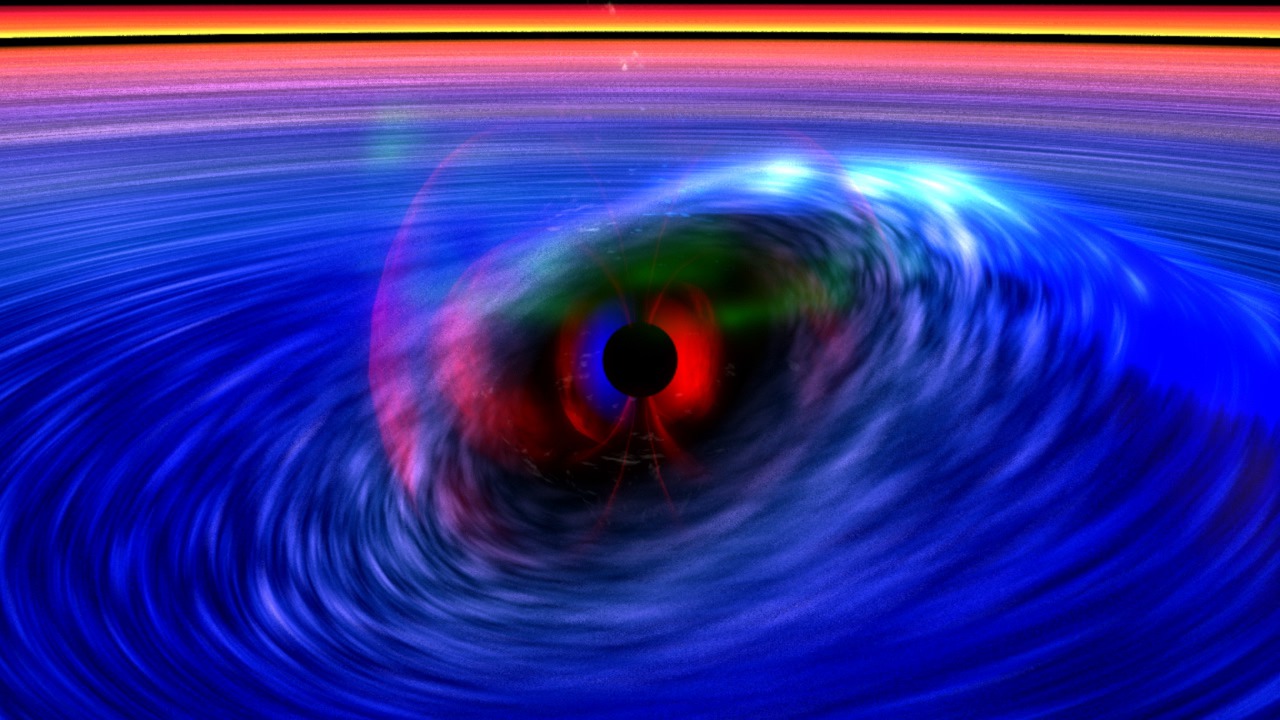Black Holes Vertical Video
This page contains vertically-formatted Astrophysics videos related to the topic of black holes.
Black Hole Week 2024 Plunge Reel
NASA supercomputers produced this immersive visualization that allows you to dive in without it becoming a one-way trip. The destination: a black hole, similar in size to the one at the heart of the Milky Way.
As you get closer to the black hole, your speed climbs until it approaches the speed of light — the cosmic speed limit! The glow from the stars in the background and from the disk of hot material surrounding the black hole becomes amplified, growing brighter and whiter. The effect is similar to how the sound of an oncoming racecar rises in pitch.
Along the way, the black hole’s disk and the night sky become increasingly distorted and even form multiple images as their light crosses the increasingly-warped space-time.
This 400-million-mile (640-million-km) trip would take you about 3 hours. It’s quite a ride — and you’d only get to do it once if this wasn’t a simulation!
Credit: NASA’s Goddard Space Flight Center/J. Schnittman and B. Powell
Music: “Tidal Force,” Thomas Daniel Bellingham [PRS], Universal Production Music
Find more information and content here.
Complete transcript available.
Black Hole Week 2024 Fly-by Reel
We’re opening Black Hole Week with a fly-by around a black hole, just skirting the event horizon. This data-driven visualization shows you gravity’s warped effects.
The destination: a supermassive black hole with 4.3 million times the mass of our Sun, like the one at the center of our Milky Way galaxy. You’ll loop around the event horizon, the boundary where the black hole's escape velocity equals the speed of light, the speed limit of the universe. Anything that crosses will never escape.
A flat, swirling cloud of hot, glowing gas surrounds the black hole and is your guide on the trip. You’ll also see glowing structures called photon rings, which form closer to the black hole from light that has orbited it once or more. A backdrop of the starry sky as seen from Earth completes the scene.
As you loop around the black hole, things appear to twist and contort in the black hole's strong gravity. Hold on tight! One false step and you could become a black hole’s next meal.
Follow our account for more black hole updates throughout the week!
Credit: NASA's Goddard Space Flight Center/J. Schnittman and B. Powell
Music: "Beautiful Awesome," David Husband and James William Banbury [PRS], Universal Production Music
Find more information and content here.
Complete transcript available.
M87 Zoom
In April 2019, the Event Horizon Telescope revealed the shadow of a supermassive black hole in the elliptical galaxy M87—the first time such an image had been captured. Astronomers have studied M87 for centuries, in part due to a spectacular jet of high-energy material streaming from its center. This video zooms in on M87 with visible, X-ray, and radio images, ending on the historic image from 2019.
Video credit: NASA's Goddard Space Flight Center
Music: "Tension Underlying" from Universal Production Music
Image credits: NOAO/AURA/NSF; Robert Lupton and the Sloan Digital Sky Survey; NASA and Hubble Heritage Team (STScI/AURA); NASA/CXC/Villanova/J. Neilsen; F. Owen, NRAO, with J. Biretta, STScI; Y.Y. Kovalev, Max Planck Institute for Radio Astronomy; NRAO/R. Craig Walker et al. (2016); EHT Collaboration
Find more information and content here.
Complete transcript available.
Binary Black Hole Visualization
The dancing arcs in this visualization reveal the twisted space-time surrounding a pair of supersized black holes, each with its own disk of hot gas.
When viewed from the top, there’s nothing special about how the disks appear. However, looking at the system edge-on, each black hole takes on a warped appearance. As one passes in front of the other, the gravity of the foreground black hole transforms its partner into rapidly changing arcs.
Visualizations like this help scientists picture the consequences of extreme gravity’s funhouse mirror.
Credit: NASA’s Goddard Space Flight Center/Jeremy Schnittman and Brian P. Powell
Music: “Teapot Waltz,” Benjamin James Parsons [PRS], Universal Production Music
Find more information and content here.
Complete transcript available.
Black Hole Binary X-ray Emission
Simulation of the light emitted by a supermassive black hole binary system where the surrounding gas is optically thin (transparent). Viewed from 0 degrees inclination, or directly above the plane of the disk. The emitted light represents all wavelengths.
Credit: NASA's Goddard Space Flight Center/Scott Noble; simulation data, d'Ascoli et al. 2018
Music: “Inner Garden,” Ryan Redebaugh [ASCAP], Universal Production Music
Find more information and content here.
Complete transcript available.
Spinning Black Hole
When a black hole spins, it can drag the very fabric of space around with it. Scientists learned that hot iron gases are riding a ripple in space-time around a black hole like a surfer catching a sick wave.
Video credit: NASA
Music credit: “Surfer Ali,” Oded Fried-Gaon [ACUM] and Renato Antic [HDS], Universal Production Music
Complete transcript available.
Black Hole Week 2024 Teaser Reel
Vertically-formated teaser video using poster design elements.
Music: "Sorceror's Dream" from Universal Production Music
Complete transcript available.
Credit: NASA's Goddard Space Flight Center Conceptual Image Lab
Find main content here.
Credits
NASA's Goddard Space Flight Center. However, individual items should be credited as indicated above.
-
Social media producers
- Sara Mitchell (University of Maryland College Park)
- Barb Mattson (University of Maryland College Park)
- Kelly Ramos (Business Integra)
-
Producers
- Scott Wiessinger (eMITS)
- Sophia Roberts (eMITS)
- Chris Smith (eMITS)
-
Science writers
- Francis Reddy (University of Maryland College Park)
- Jeanette Kazmierczak (University of Maryland College Park)
Series
This page can be found in the following series:Release date
This page was originally published on Tuesday, May 27, 2025.
This page was last updated on Tuesday, May 27, 2025 at 8:55 PM EDT.
